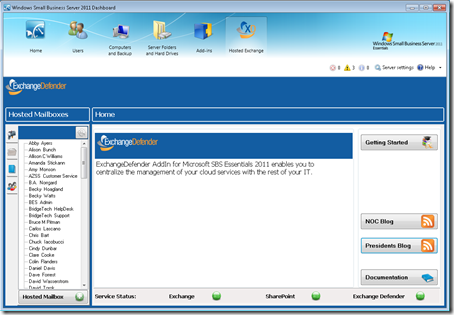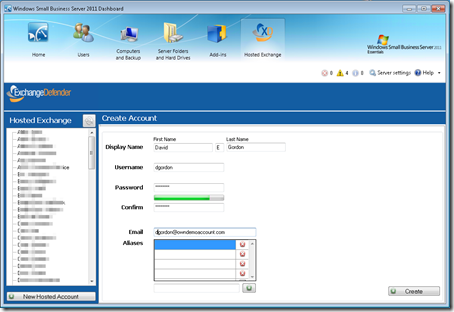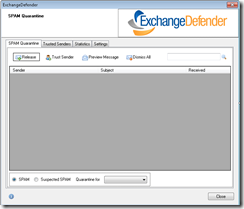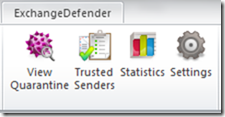Nearly three years ago I wrote series of articles that I called Lucy’s Sail (Google), about the change of OWN’s business direction and our focus and commitment to the cloud. It almost instantly made me the SMB community public enemy #1 but after thirty-something straight months of profit and revenue growth during the implosion of the US economy there are few people out there that doubt the cloud. That debate ended a while ago and even today the perennial powers of HP and Dell are both reporting lower demand for steel.
Imagine a crowded room full of people that love to talk and everyone has a microphone. Sometimes in order to get your message out you have to either be louder or just make the most extreme comment you possibly can in order to get people to start paying attention. I believe I went with “You have to redesign your business around the cloud or face career choices of a used car salesman or Geeksquad handy man dusting CPU and case fans by day, installing TVs at night.” I went on to hire Andy Goodman as my personal body guard and during one of the MVP meetings in Seattle sat down with Paul Fitzgerald and Kevin Beares to talk about their Aurora concept.
 What I actually do for a living
What I actually do for a living
I am in the business of making money. So while at times I may say stuff that makes you scratch your head, polar opinions rarely make it into contracts and into checks – there are no absolutes. So when it comes to the cloud – yes, it is and will grow as an even more dominant technology. But does that immediately or ultimately signify the death of all desktops, servers and client owned IT infrastructure? Only if you’re suicidal.
When I first spoke to Paul and Kevin about what I was working on, I explained that I have been doing the “hosting” business for a long time and actually worked with clients directly in the late 90’s on helping move things to the data center. One thing I learned early on is that in a utopian IT deployment, the client would retain all the control and data storage but outsourced all the nightmares: licensing, security, patching, upgrading, backing up, planning for capacity upgrades and general maintenance. Your typical small or medium business cares extremely little about their IT overall – but they care a lot about their data. Even the more IT strategic companies that buy the latest and the greatest will cringe and think about the TCO and costs associated with keeping everything moving. Here is what the SMB IT needs to look like:
Your small business owner does not want you to build a chicken coop, get bird feed, install a solar power array or a wind turbine to power the kitchen and then make them slaughter a bird every time they want a chicken. Ron said it right: “Set it and forget it.” – they want you to set their IT up and they don’t want to think about it, hear about it, meet you to consider projects or plan to eat a roasted chicken 18 months from now.
Your typical small or medium sized business loves the cloud because it’s simple, efficient and easy. But if they knew the risk, they would take their data control a lot more seriously.
If you Google for “cloud downtime” or lost data you will see that cloud is far from bullet proof or immune from problems. Stuff goes down. And when it goes down it’s not like an eMachines box that comes back after a reboot – it’s arrays and arrays and arrays of clusters that need to be brought back up. Some cloud providers have even lost their clients data – permanently.
So what’s the competitive advantage to the IT Solution Provider who wants to fulfill their clients need for a simple and manageable IT but wants to give them control over their data? This is a long conversation Kevin, Paul and I had in ‘07/’08 and those guys delivered their vision in the form of Aurora aka Small Business Server 2011 Essentials. Here is mine:
ExchangeDefender for SBS Essentials
ExchangeDefender Hosted Exchange now directly integrates in SBS 2011 Essentials for account management, control and maintenance:
Built in directly into the SBS 2011 Dashboard, you can manage your ExchangeDefender cloud services and see any service alerts, service status, link to the documentation and all the relevant stuff without all the complex things your typical user does not care about.
It ties back elegantly into your Shockey Monkey portal which is already branded with your logo, company name, your pricing scheme and backed by a company that doesn’t compete with you. The authentication isolates accounts and change management to the accounts owned by this company and gives them the full management power without having to remember passwords or hop from service to service, site to site.
Account management is dead simple and gives the business control they want without the mess or complexity they don’t want, don’t need and can’t afford.
Tie that in with the Outlook 2007/2010 integration between ExchangeDefender and their desktop, Shockey Monkey backoffice management that gives you support and integration back to your PSA, ability to link in your existing business model with a cloud service provider that delivers seamless integration across Hosted Exchange/SharePoint, Offsite Backups, business continuity, hosting and everything else you need in the cloud where you call the shots, name the price and keep control of your client? How’s that business model looking now?
Oh, one more thing…
Wouldn’t it be cool if this thing also took all of the data your client stores in the cloud across Exchange, SharePoint, ExchangeDefender and so on… and created a local backup / snapshot / cache on your SBS 2011 Essentials box? Turning the local server into a secure storage locker for all your cloud stuff that you don’t want to build yourself? I hope that got your attention and I’ll get it to you later this year, but everything else you can have starting tomorrow after the TechEd launch. If you see my guys there, make them show it to you live.
![]()
Anyhow, my name is Vlad and I just built your business model and support tools for the next few years. Click here and then give me a call.









 For the less coherent, more grammatically correct realtime insight, follow me on Twitter at
For the less coherent, more grammatically correct realtime insight, follow me on Twitter at
10 Responses to And now something a little different